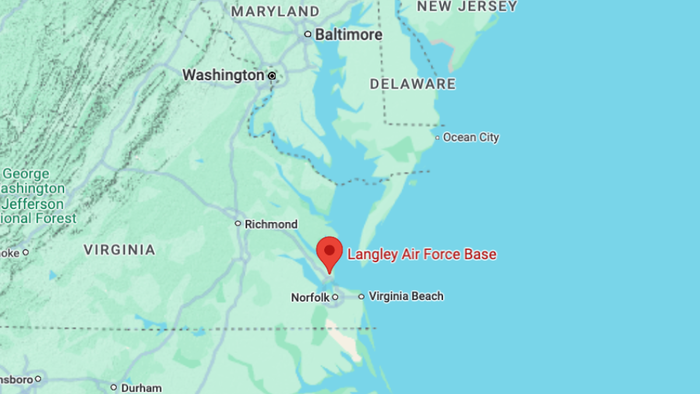Since the onset of the 21st century, U.S. defense spending has dramatically increased, with the current budget exceeding $841 billion — nearly a 50% rise. Despite holding the title of the world’s most significant military spender, the Pentagon faces considerable challenges in safeguarding the country from escalating threats, such as the proliferation of spy drones operating within its borders. A recent report by the Wall Street Journal highlights a troubling incident where a series of spy drones infiltrated highly sensitive national-security areas, including the Langley Air Force Base in Virginia. For several consecutive nights, military personnel observed a mysterious violation of restricted airspace, raising alarms about the potential for espionage against vital facilities.
The report detailed how the influx of spy drones commenced shortly after sunset, with one drone reportedly being a substantial 20 feet long, capable of flying at speeds exceeding 100 miles per hour and at altitudes between 3,000 to 4,000 feet. The drones’ presence raised significant concern among military officials, notably Air Force General Mark Kelly, who expressed confusion over the situation. The incursions persisted for approximately two weeks, and speculation arose about the involvement of foreign powers, particularly Russian or Chinese agents, conducting surveillance on military assets. Unfortunately, existing federal laws restrict the military from responding aggressively to such drone activities, as fighter jets can only be deployed in situations where an imminent threat is present.
In light of these drone encounters, President Biden received urgent briefings from various officials, including those from the Defense Department, the FBI, and the Pentagon’s unidentified aerial phenomena office. Without a doubt, the inability to address the drone breaches reflects broader systemic vulnerabilities in national security. The ongoing challenges at America’s southern border, where millions of undocumented individuals, including potential terrorists and criminals, have entered the country, have further intensified concerns about national security. High-ranking officials like Homeland Security Advisor Elizabeth Sherwood-Randall explored various countermeasures against drone threats, such as deploying anti-drone technology and directed energy weapons to neutralize the drones, but these options were ultimately dismissed due to potential repercussions for civilian communications and air traffic safety.
One particularly alarming incident occurred in January when a Chinese student attending the University of Minnesota was apprehended for flying a drone near Langley Air Force Base. Authorities discovered that he had captured drone footage of Navy ships docked at the base, leading to his arrest on charges of unlawfully photographing classified military installations while attempting to exit the country. This case underscores significant lapses in national security, highlighting the reality that foreign adversaries may test the United States’ vulnerabilities with minimal resistance, especially when personnel focus on non-traditional agendas rather than pressing security matters.
The implications of these events resonate beyond immediate security concerns. Many experts critique the situation as an unparalleled failure in military oversight and preparedness, drawing attention to a perceived distraction among leaders seemingly preoccupied with a broad range of social and cultural issues. This notion of a “woke” agenda weakening institutional resolve is prevalent among critics who argue that such distractions divert crucial resources and attention from addressing real threats to national security and sovereignty. Revenue allocation toward high-tech military advancement does not always translate into effective defensive measures capable of responding to unconventional threats like drone surveillance.
In summary, the troubling presence of spy drones in sensitive areas indicates a significant oversight and lack of preparedness within the U.S. military and governmental bodies despite substantial investment in defense. The juxtaposition of heightened defense spending against legislative constraints and blurred governmental priorities requires profound reflection and remediation. As evolving drone technologies provide adversaries new avenues for surveillance, a comprehensive reevaluation of both policy and resources will be necessary to fortify national security against these emerging threats, ensuring that military capabilities align effectively with the challenges faced in a twenty-first-century global landscape. The urgency of addressing these vulnerabilities cannot be overstated; as common perceptions of security erode, immediate and decisive actions must be taken to safeguard America’s national interests.

